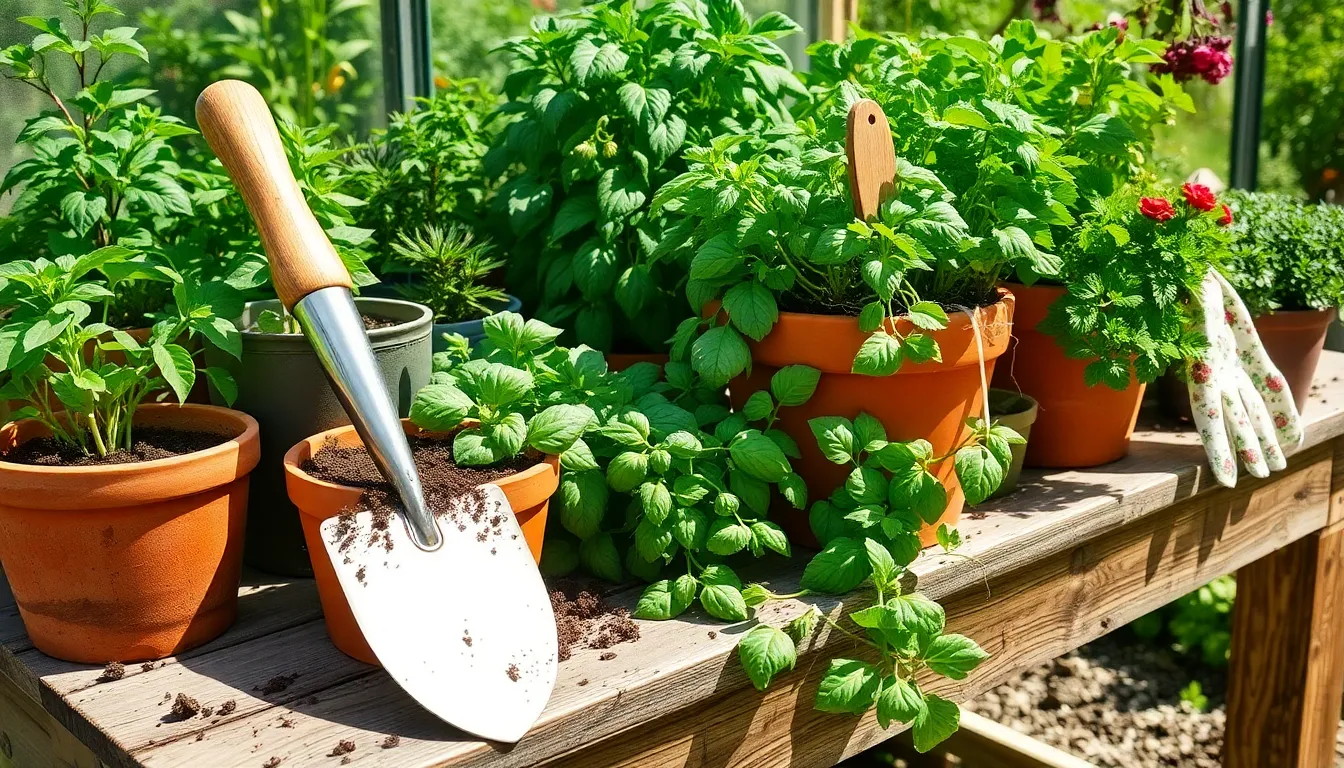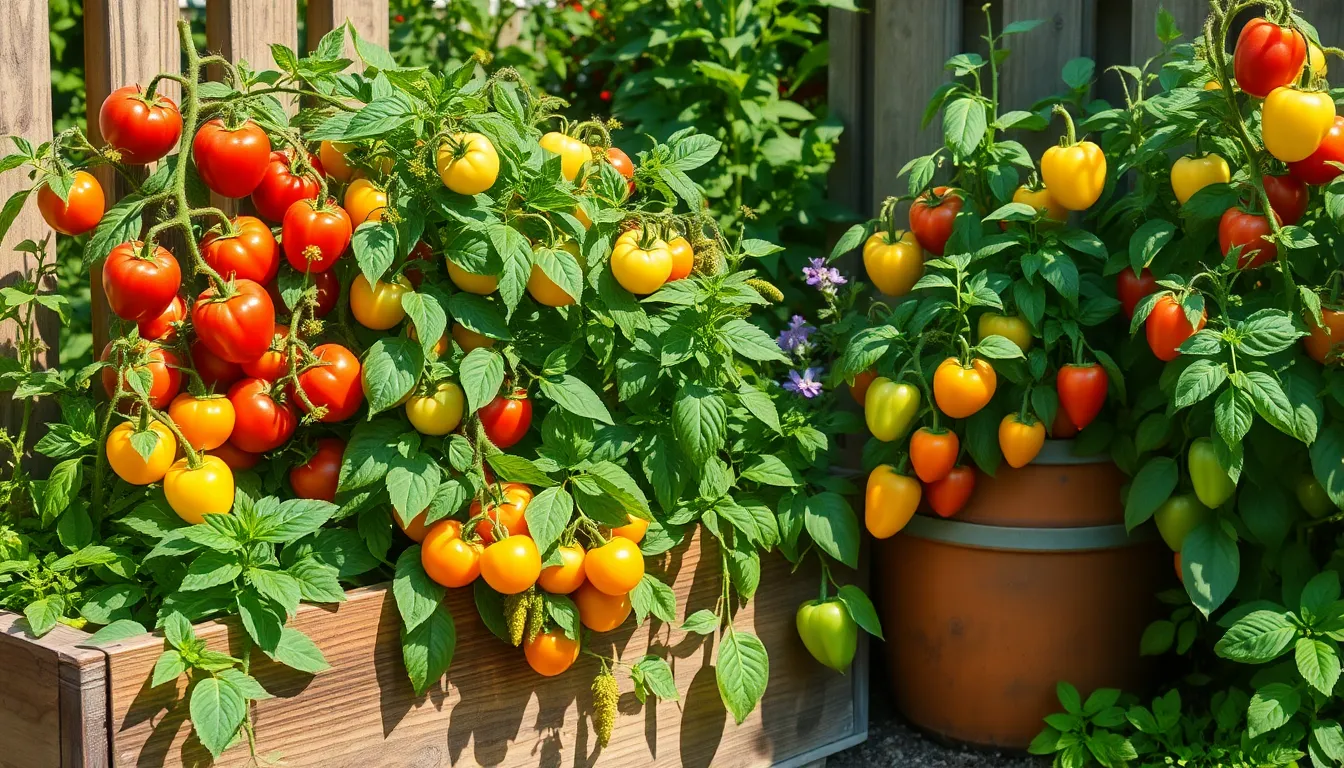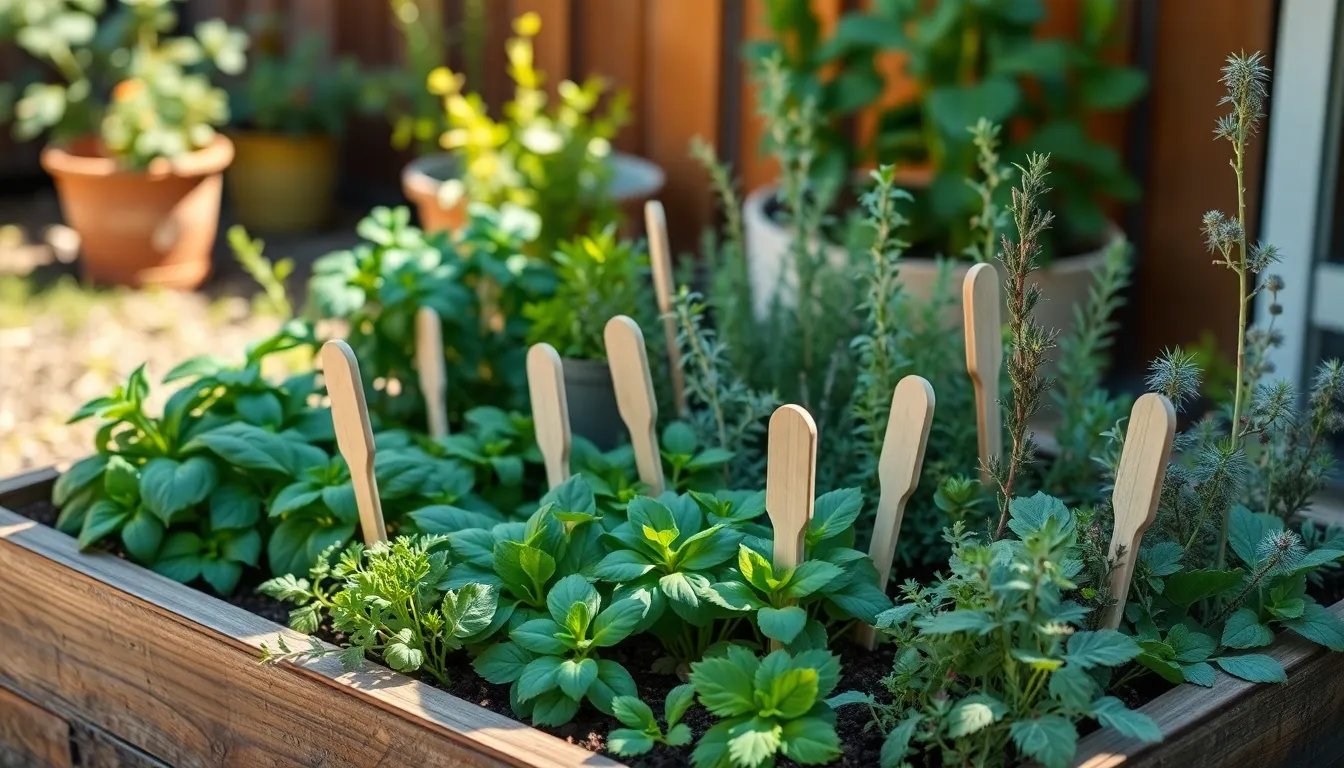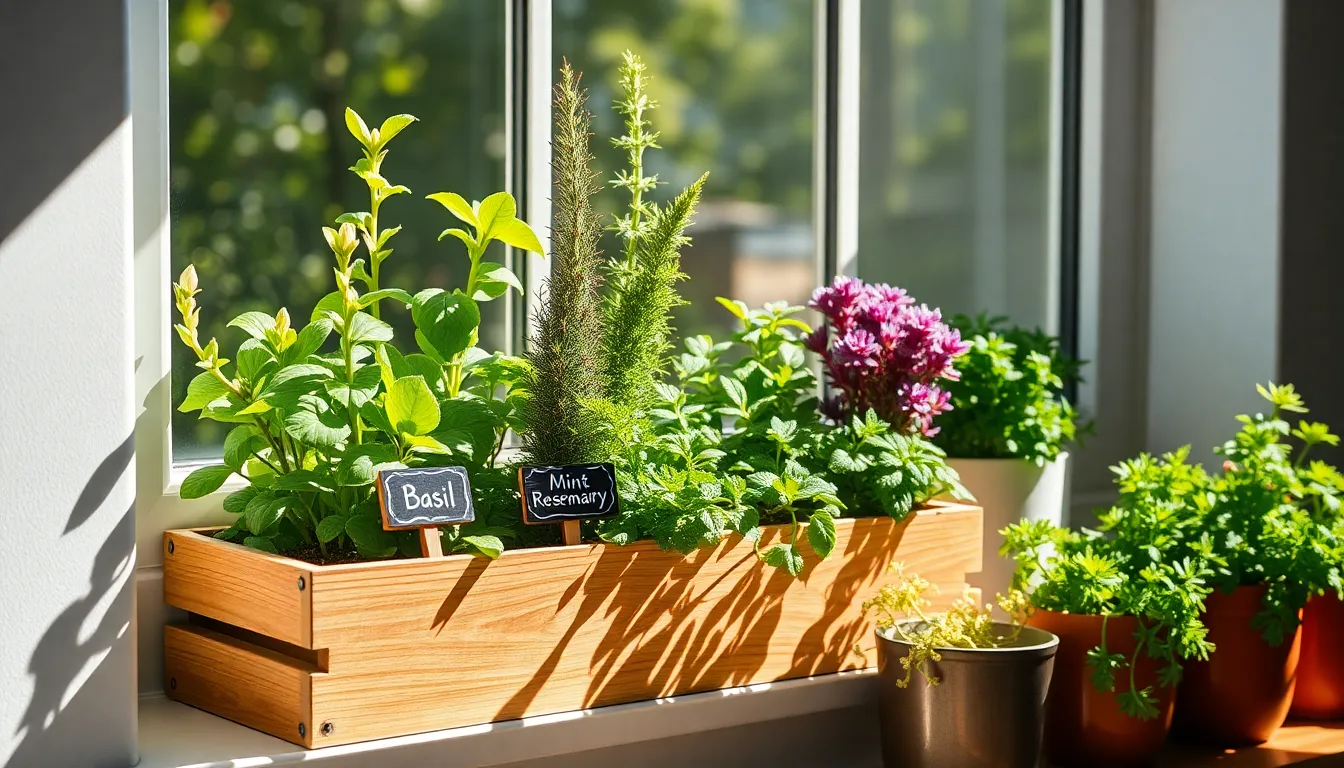Herb gardening is a delightful pursuit that opens the door to fresh flavors and aromatic pleasures right at your fingertips. Whether you’re just starting to explore the joys of growing your own basil, mint, or thyme, or you’re a seasoned gardener with a few flourishing herbs on your windowsill, the right tools can make all the difference in your gardening experience.
Having a well-curated set of tools is crucial not only for the health of your plants but also for enhancing your own gardening enjoyment. In this article, we’ll walk you through 15 essential tools that cater to every aspect of herb gardening, from planting seeds to harvesting fragrant leaves with ease.
You’ll discover how the right tools can simplify tasks, improve efficiency, and ultimately lead to a more successful herb garden. So, whether you’re looking to expand your toolkit or refine your existing collection, these recommendations will empower you to cultivate your herbs with confidence and joy.
Introduction to Herb Gardening Tools
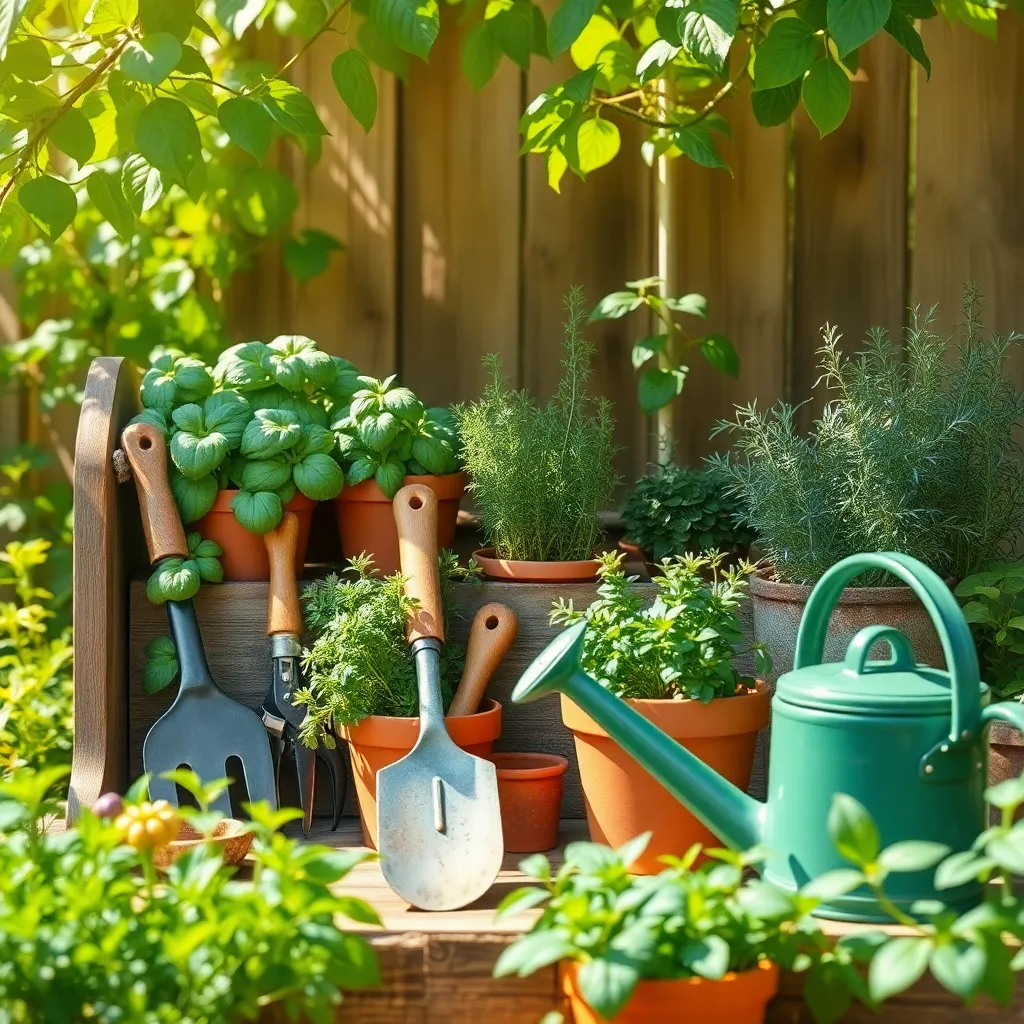
Starting a herb garden requires having the right tools to make the process efficient and enjoyable. A good set of tools not only saves time but also enhances the health of your plants. Invest in a quality pair of pruning shears, as they are essential for maintaining the shape and health of your herbs. Sharp shears make clean cuts, reducing damage and promoting faster healing.
Next, consider a trowel for planting and transplanting your herbs. Choose a trowel with a comfortable grip and a sturdy blade to ease the process of digging and moving soil. For those tackling larger herb gardens, a garden fork can be very useful. It helps in loosening compacted soil, which improves root growth and nutrient uptake.
Watering cans or hoses with adjustable nozzles are crucial for maintaining the right moisture levels. Herbs typically prefer well-drained soil, so ensure you’re watering adequately without over-saturating the roots. Using a soil moisture meter can help beginners determine when to water, preventing common mistakes like overwatering. For advanced gardeners, investing in a drip irrigation system can save time and water while keeping your herbs healthy.
Additionally, having a garden journal can be beneficial for tracking the growth and health of your herbs over time. Record observations on plant growth, harvesting times, and any issues encountered to refine your gardening techniques. A garden kneeler or cushion can also be a worthy investment, providing comfort during long planting sessions. By equipping yourself with these tools, you’re setting the stage for a thriving herb garden, ready to enhance your culinary creations.
Choosing the Perfect Hand Trowel
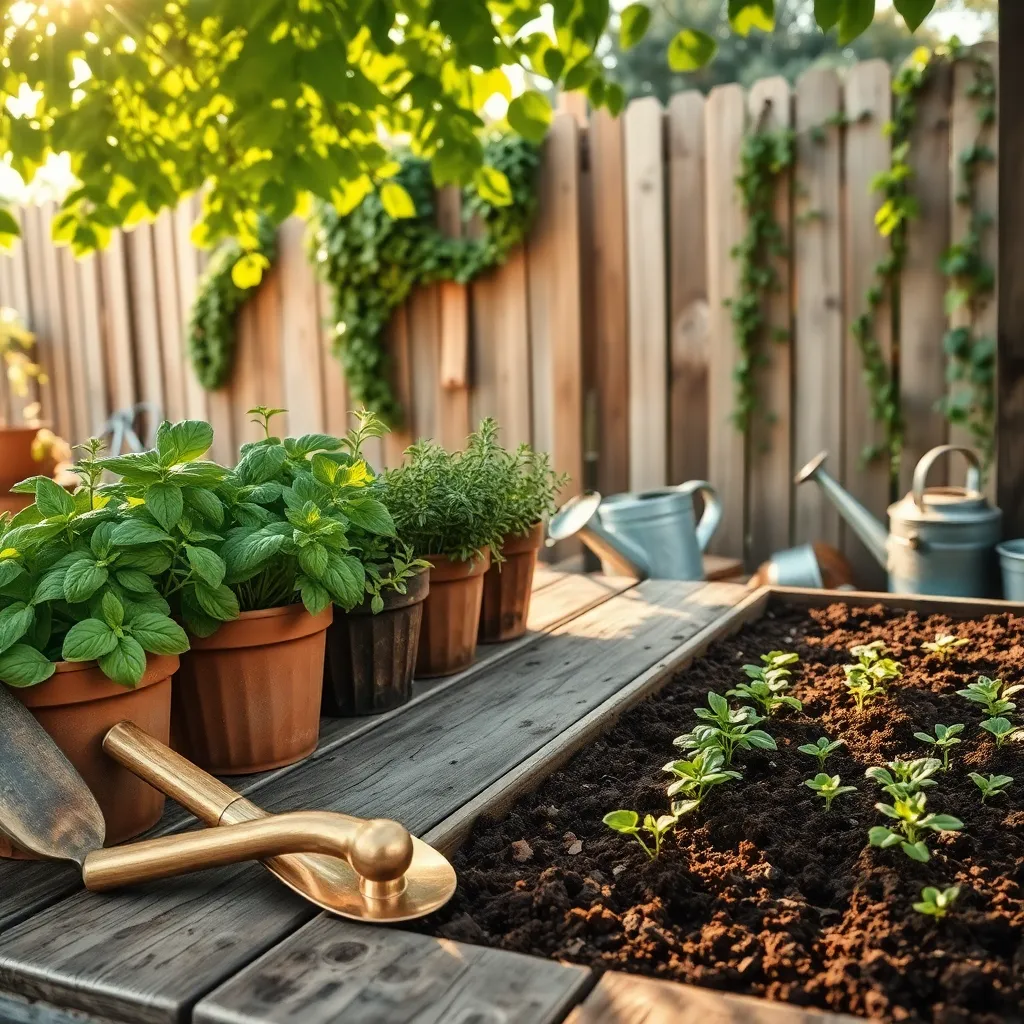
When selecting a hand trowel for your herb garden, consider the material of both the blade and the handle. A trowel with a stainless steel blade is ideal because it offers durability and rust resistance, ensuring longevity even with frequent use in moist soil.
Opt for a trowel with an ergonomically designed handle, which will reduce fatigue during extended gardening sessions. Many gardeners prefer handles made of soft rubber or wood, as they provide a comfortable grip and are less likely to cause blisters.
Size matters when it comes to trowels, especially in a confined herb garden space. Choose a trowel with a blade that is between 5 to 8 inches long, allowing for precise digging and planting without disturbing neighboring plants.
In addition to basic use, a trowel can be a versatile tool for other tasks like dividing root clumps or mixing in soil amendments. For more advanced gardeners, a trowel with a serrated edge can be particularly useful for cutting through tougher roots or compacted soil.
Benefits of a Quality Pruning Shear
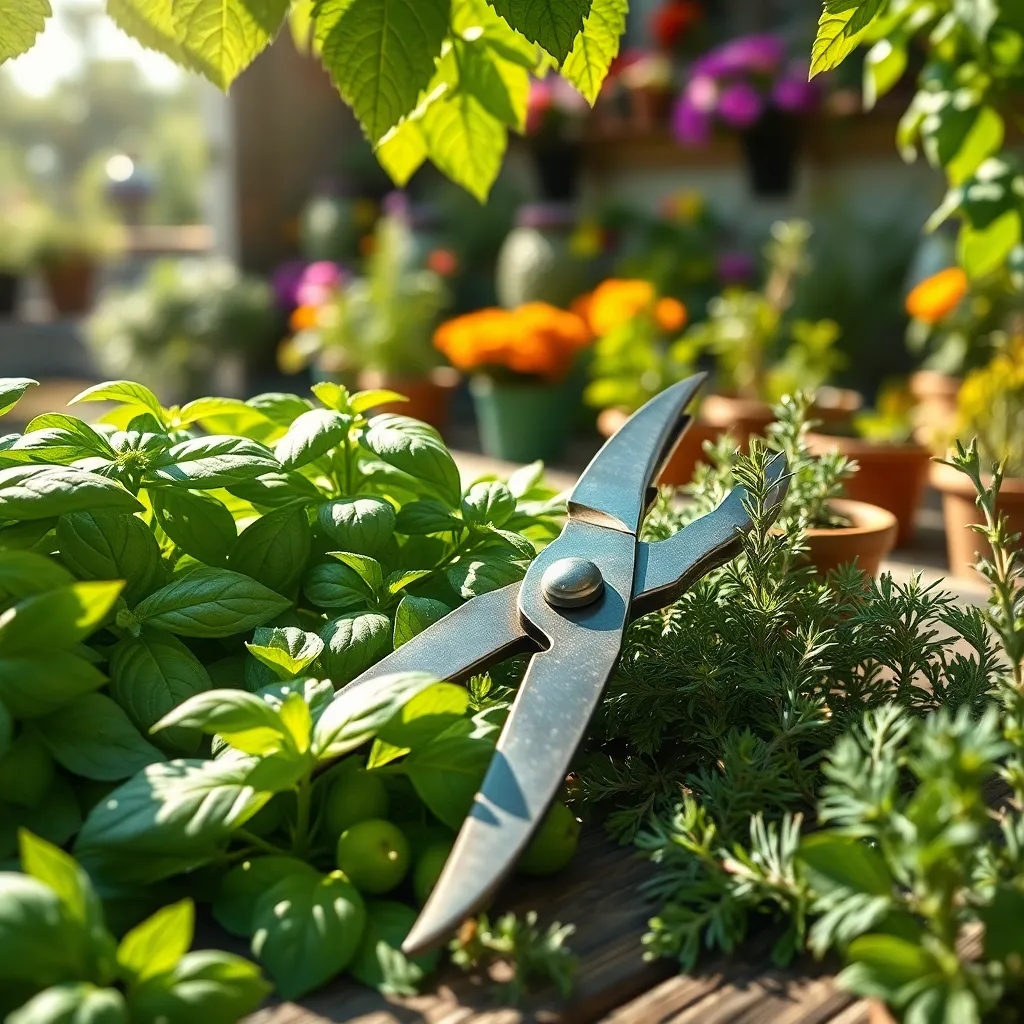
Investing in a quality pruning shear is essential for maintaining healthy herb plants. A sharp and reliable shear allows for precise cuts, minimizing damage to the plant and promoting quicker healing.
Proper pruning encourages herbs to grow fuller and more robust, enhancing their flavor and aroma. Regular trimming with a good shear can prevent diseases by improving air circulation and reducing overcrowding.
For beginners, it’s crucial to understand that different herbs require various pruning techniques. For example, basil should be pinched back regularly to encourage bushy growth, while lavender benefits from a deep cut after flowering to maintain shape.
Advanced gardeners might use pruning shears to experiment with plant shapes or maximize harvests. Keep your shears clean and sharp to prolong their life and ensure they remain effective in your herb garden.
Essential Herb Garden Gloves
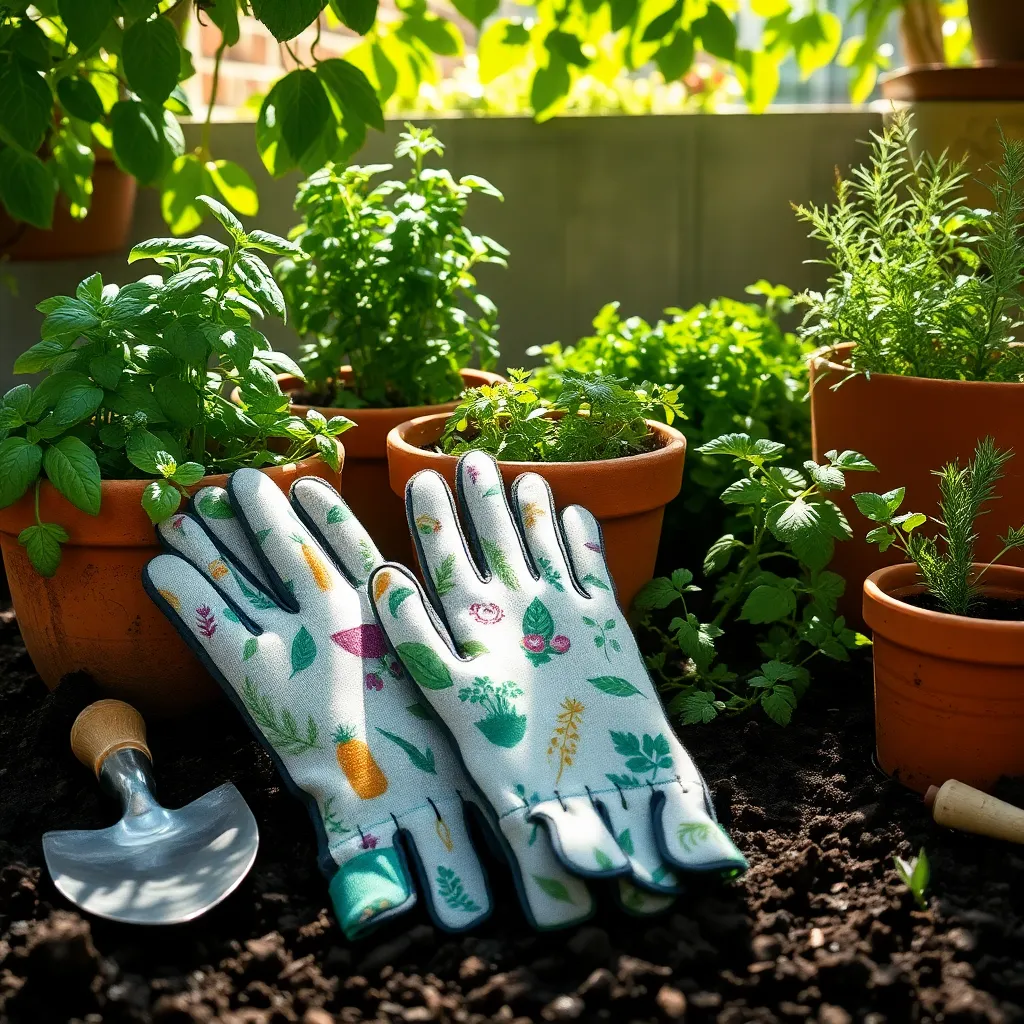
When tending to your herb garden, having the right pair of gloves is essential for both comfort and protection. Gloves safeguard your hands from thorny plants, soil-borne pathogens, and harsh weather conditions, making them a must-have tool in your gardening kit.
Choose gloves made from breathable materials like bamboo or cotton to keep your hands cool and comfortable during long gardening sessions. For those dealing with prickly herbs or plants with tough stems, consider gloves with reinforced fingertips and palms for added durability and protection.
Ensuring a snug fit is crucial to maintaining dexterity and control when handling delicate herb plants. Gloves that are too loose can compromise your grip, while excessively tight gloves may restrict movement and cause discomfort. Prioritize finding a pair that offers a balance between protection and agility.
For advanced gardeners, investing in gloves with touchscreen capabilities can enhance your gardening efficiency. These gloves allow you to seamlessly switch between gardening tasks and using gardening apps on your phone for plant care tips, without removing your gloves.
Understanding the Use of a Dibber
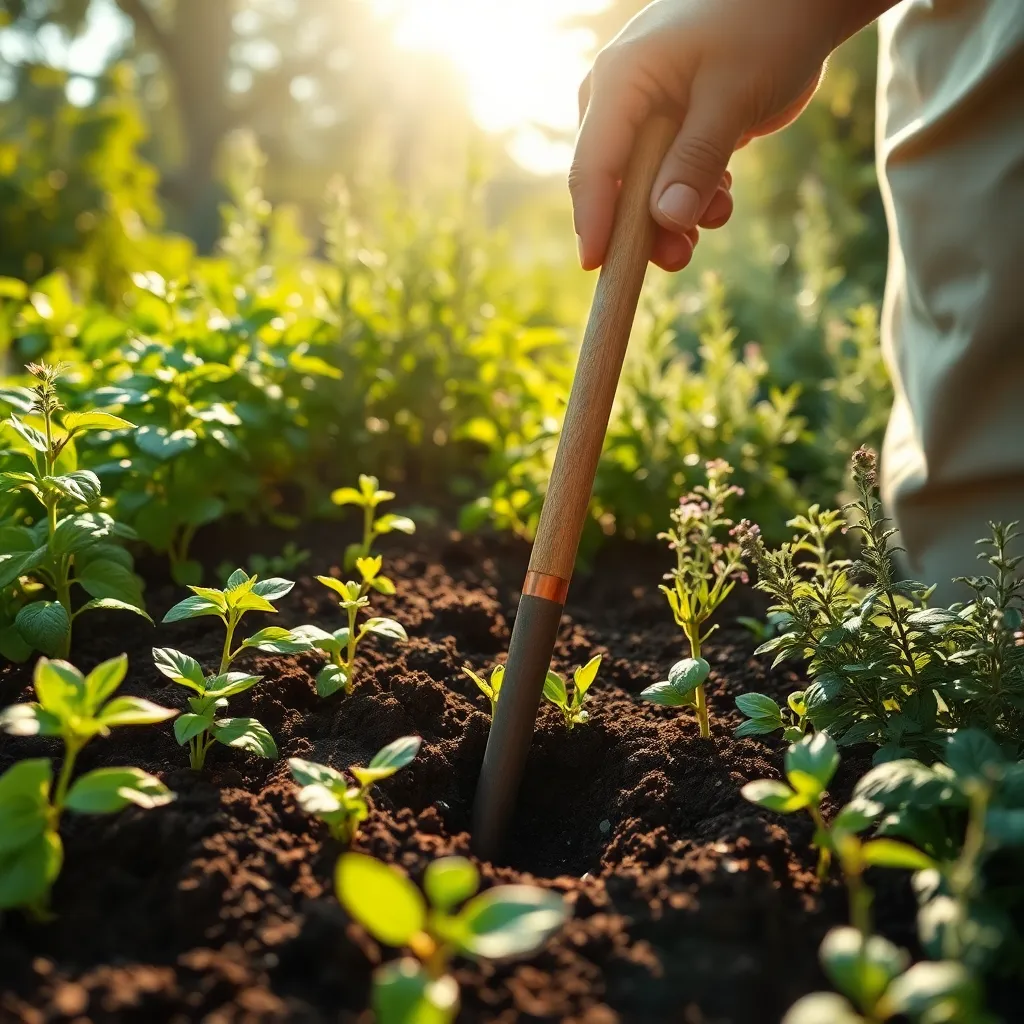
A dibber is a simple yet invaluable tool for any herb gardener, used primarily to create holes in the soil for planting seeds, bulbs, or young plants. Its pointed end allows for precise depth control, ensuring that seeds and seedlings are planted at the correct depth for optimal growth.
To use a dibber effectively, press it into the soil to the desired depth based on the type of herb you’re planting. For example, herbs like basil and cilantro should be planted about a quarter to half an inch deep, while larger seeds like dill might require a slightly deeper hole.
Using a dibber can help maintain the integrity of the soil structure, minimizing disturbance to surrounding plants. This is particularly important in densely planted herb gardens where roots are easily disturbed, potentially impacting plant health.
For those looking to upgrade their skills, consider using a dibber with depth markings. These can help ensure consistency across your plantings, which is crucial for maintaining an even and aesthetically pleasing garden layout. Investing in a quality dibber can enhance your gardening precision and efficiency, making it a must-have tool in your herb gardening toolkit.
Garden Forks: A Must-Have Tool
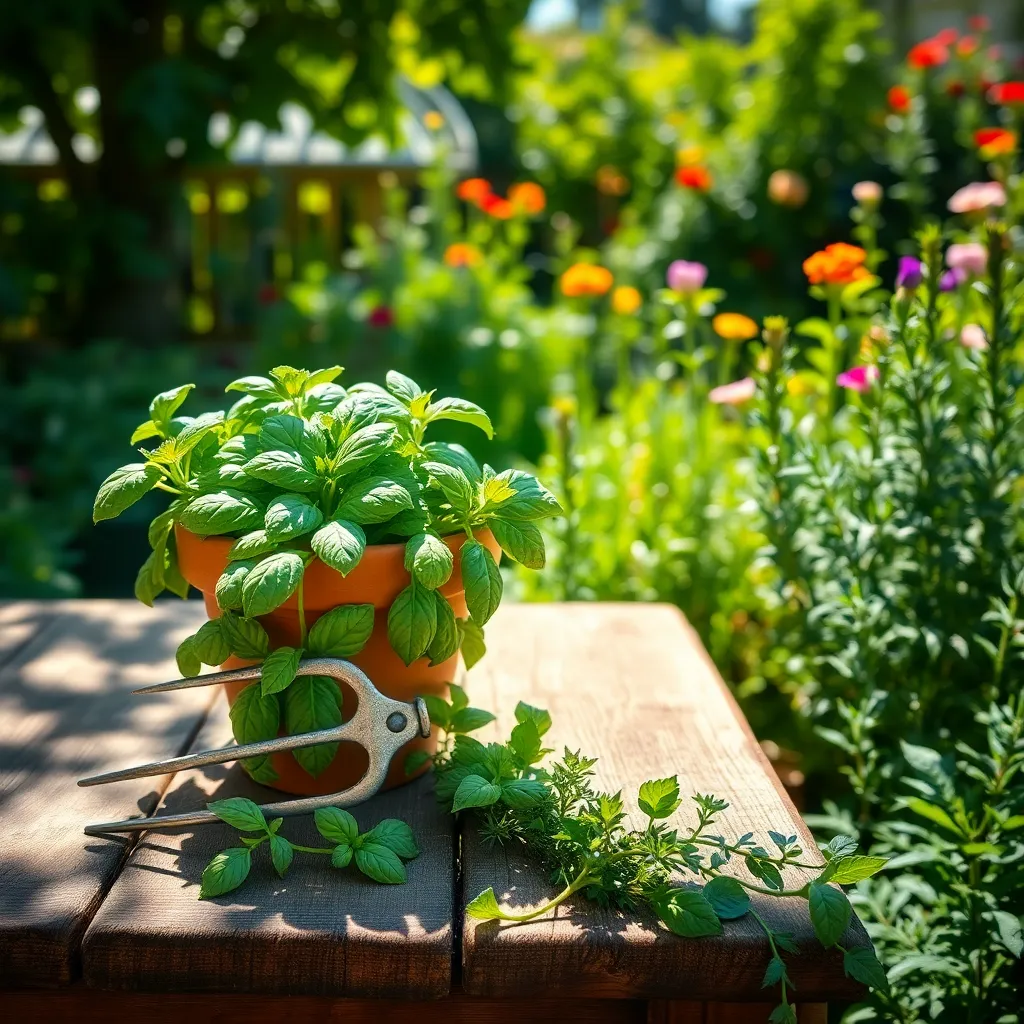
The garden fork is an essential tool for any herb gardener, offering versatility and efficiency in maintaining your garden. It is particularly useful for loosening soil around your herbs, promoting healthy root growth by allowing air and water to penetrate more effectively.
To maximize the benefits of a garden fork, choose one with sturdy, stainless steel tines that can withstand heavy use. For compacted or clay-heavy soils, a garden fork can break up the soil more effectively than a spade, ensuring your herbs have the optimal growing conditions.
Using a garden fork, you can effortlessly mix in organic matter, such as compost or well-rotted manure, to improve soil fertility. This process not only enriches the soil but also helps regulate moisture levels, which is crucial for herbs like basil and thyme that thrive in well-drained environments.
When dealing with perennial herbs, such as rosemary or sage, a garden fork allows you to gently lift and divide plants as needed, without damaging the roots. This technique helps manage plant size and encourages new growth, ensuring your herb garden remains lush and productive throughout the growing season.
The Importance of a Watering Can
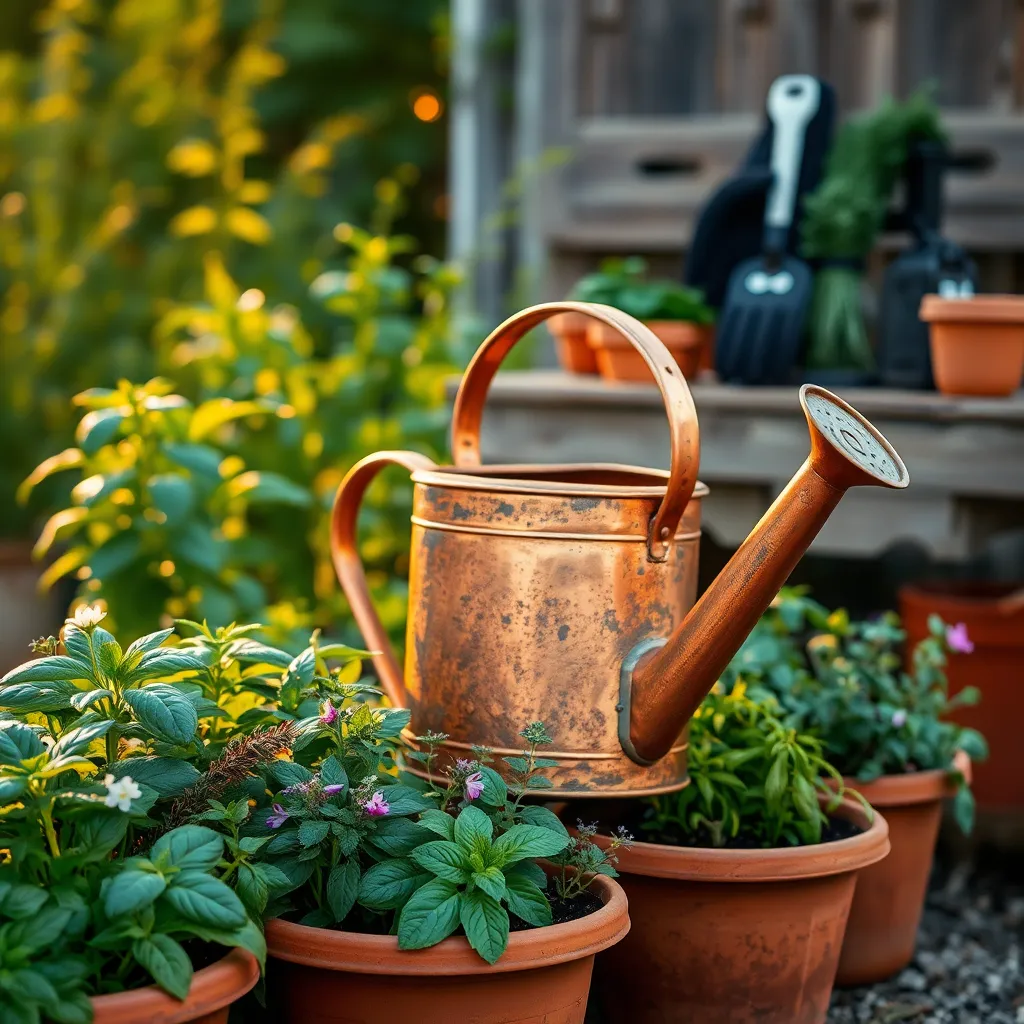
A watering can is an indispensable tool for any herb gardener, serving as a precise way to hydrate delicate plants. Its design allows you to control the flow of water, preventing over-watering and ensuring each herb receives the right amount of moisture.
Choosing the right watering can is crucial; consider one with a capacity that suits the size of your garden. For smaller herb gardens, a can with a capacity of 1 to 2 gallons is often sufficient, providing ease of use and maneuverability.
Proper watering techniques can dramatically affect the health of your herbs. Water your herbs early in the morning to reduce evaporation and allow leaves to dry before nightfall, which can help prevent fungal diseases.
Investing in a watering can with a removable spout can offer versatility for different watering needs. A rose spout attachment is ideal for delicate seedlings, while removing it can provide a more direct flow for mature plants.
Why You Need a Soil Knife
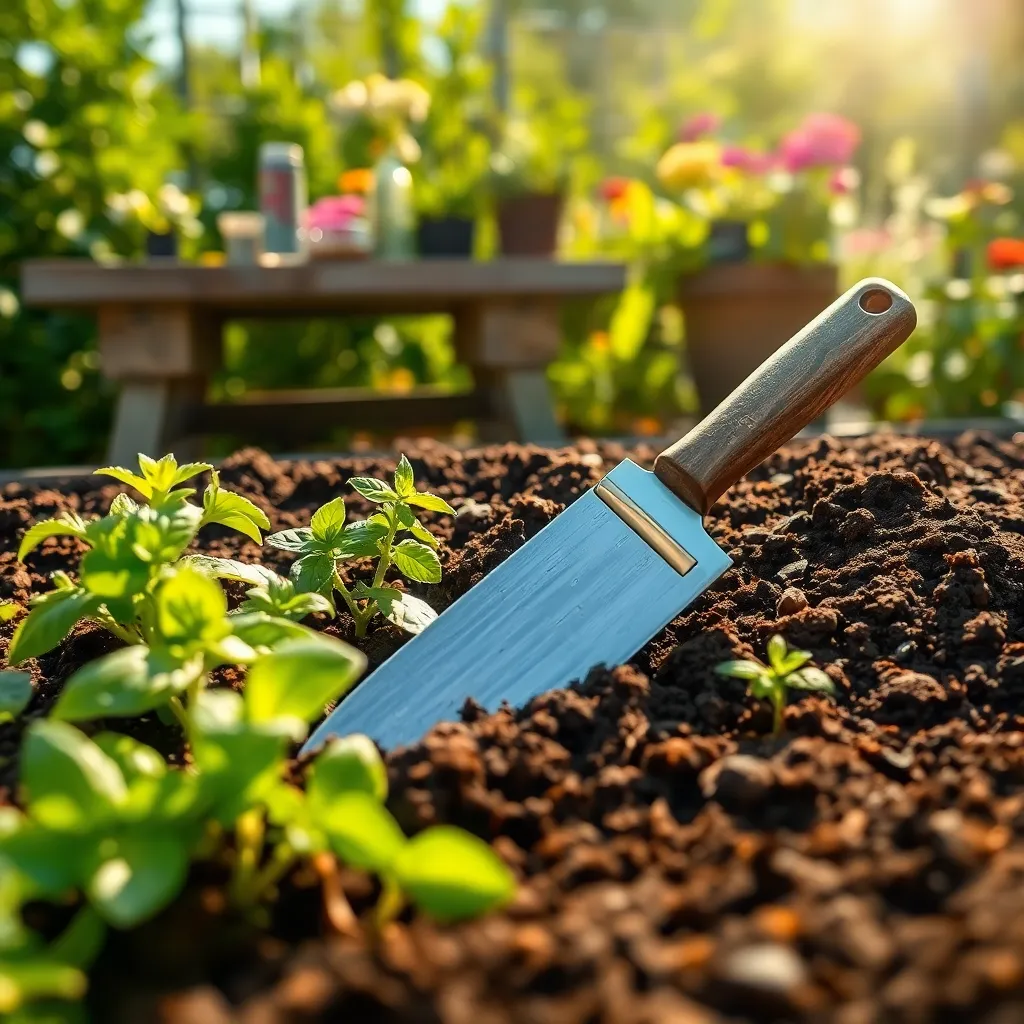
Among the indispensable tools for herb gardening, a soil knife stands out for its versatility and efficiency. This tool is perfect for beginners who are getting started with planting, as well as experienced gardeners seeking precision.
One of its primary uses is for planting and transplanting herbs, thanks to its sharp, pointed blade. You can easily cut through compacted soil or remove weeds without disturbing the roots of nearby plants.
Advanced gardeners will appreciate the soil knife’s ability to divide perennial herbs such as chives and mint. By slicing cleanly through roots, you can propagate your plants with minimal effort and stress on the plant.
For those focusing on soil health, a soil knife can also be used to test soil density and tilth. Simply insert the blade into the ground to gauge soil compaction, ensuring your herbs have the aeration they need for optimal growth.
Selecting a Durable Garden Hoe
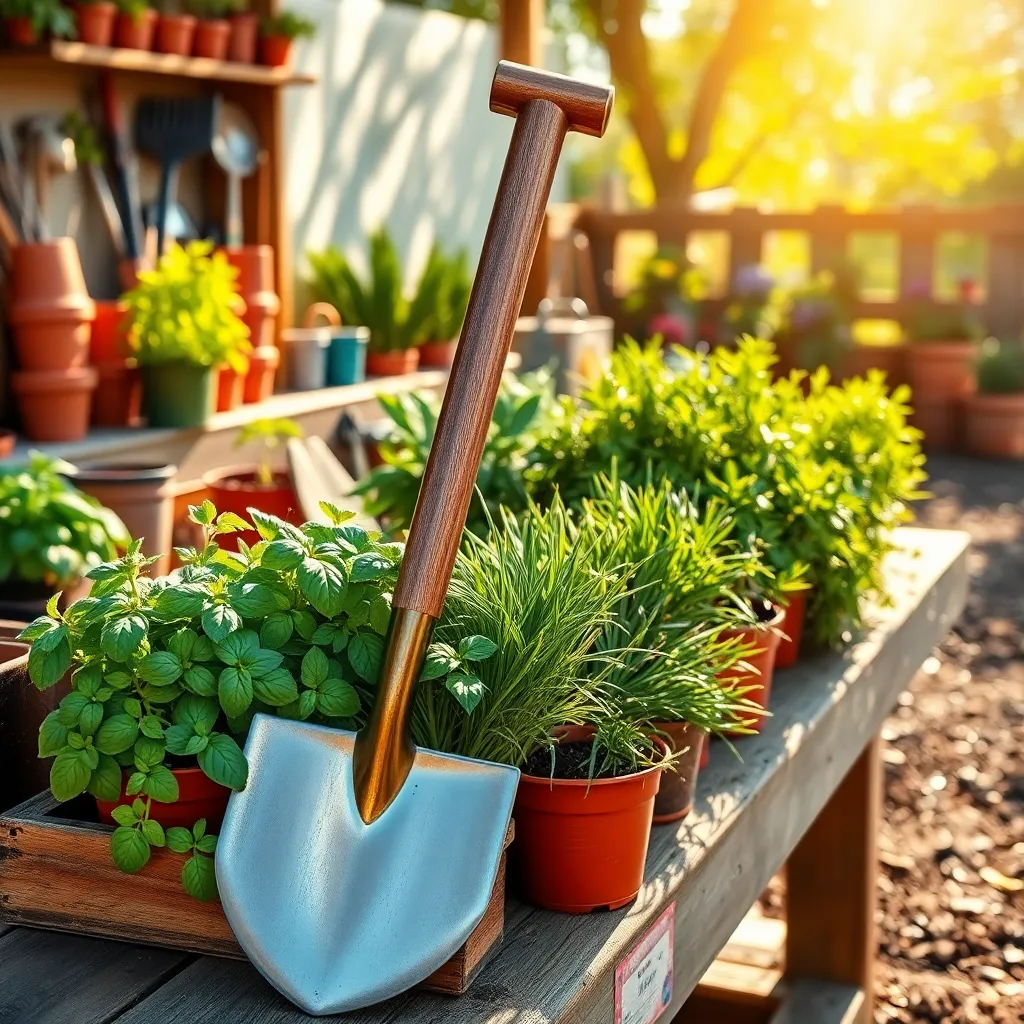
When selecting a durable garden hoe, it’s essential to choose one that is both sturdy and comfortable to use. Look for hoes with handles made from hardwood or fiberglass, as these materials offer strength and reduce vibration during use.
Consider the type of blade best suited for your gardening tasks. A stirrup hoe, sometimes known as a scuffle hoe, is ideal for cutting weeds at the root level without disturbing the soil too much.
For beginners, start with a basic hoe that has a sharp blade and a manageable weight. This will help you get a feel for the tool while ensuring you can work efficiently without strain.
Experienced gardeners might want to invest in a hoe with interchangeable heads, offering versatility for different gardening tasks. Ensure the hoe’s blade is sharp and well-maintained to maximize efficiency and ease of use during long gardening sessions.
The Versatility of a Wheelbarrow
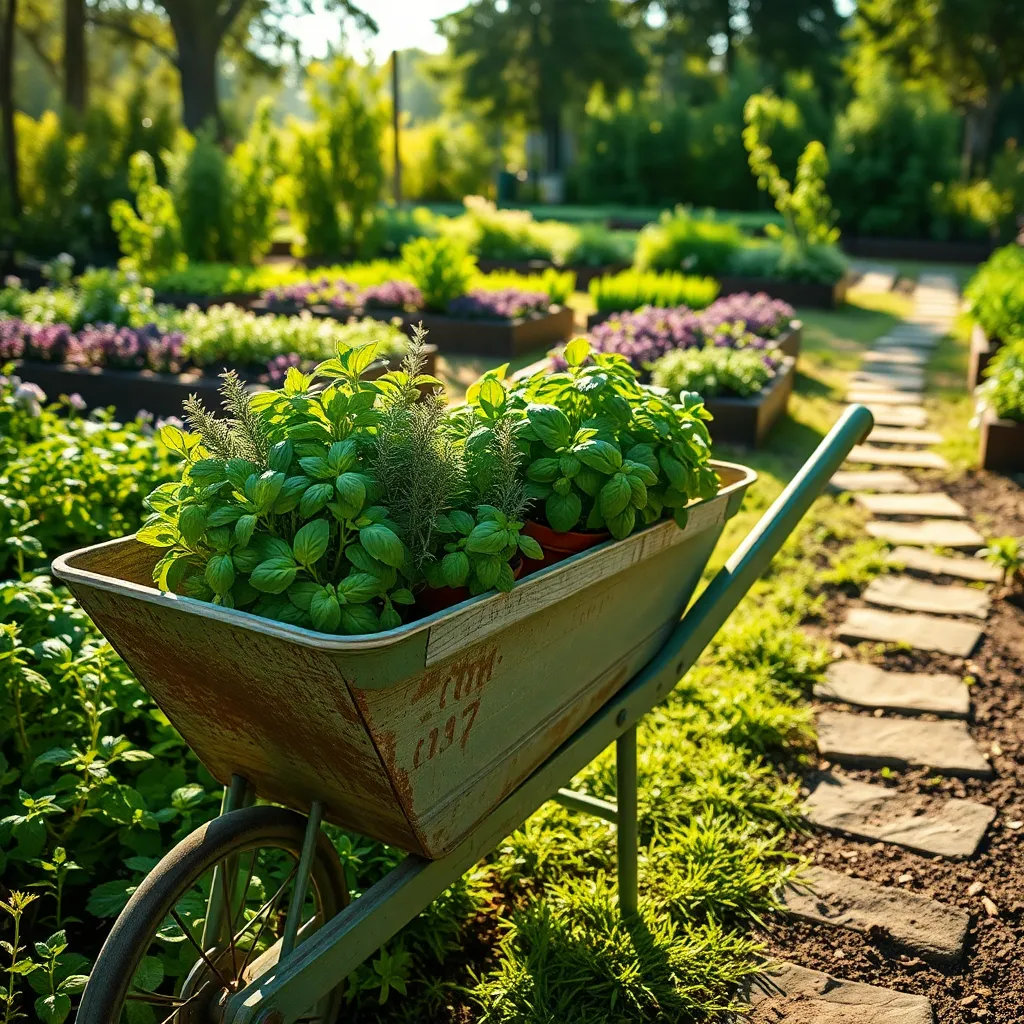
A wheelbarrow is an essential tool in any herb garden, offering unparalleled versatility for various tasks. Whether you’re moving soil, transporting plants, or carrying tools, a wheelbarrow can significantly ease the workload.
For beginners, using a wheelbarrow helps in efficiently managing larger quantities of materials without straining your back. Start with a lightweight, durable model that is easy to maneuver, especially if your garden space is limited.
Advanced gardeners can use a wheelbarrow to mix potting soil or compost directly within the tray, ensuring a consistent blend before applying it to the garden beds. This not only saves time but also ensures that your herbs receive the right balance of nutrients and aeration.
When choosing a wheelbarrow, consider the type of terrain in your garden. Opt for one with pneumatic tires if navigating over uneven or soft ground, as they provide better stability and shock absorption.
Measuring Success with a Soil Tester
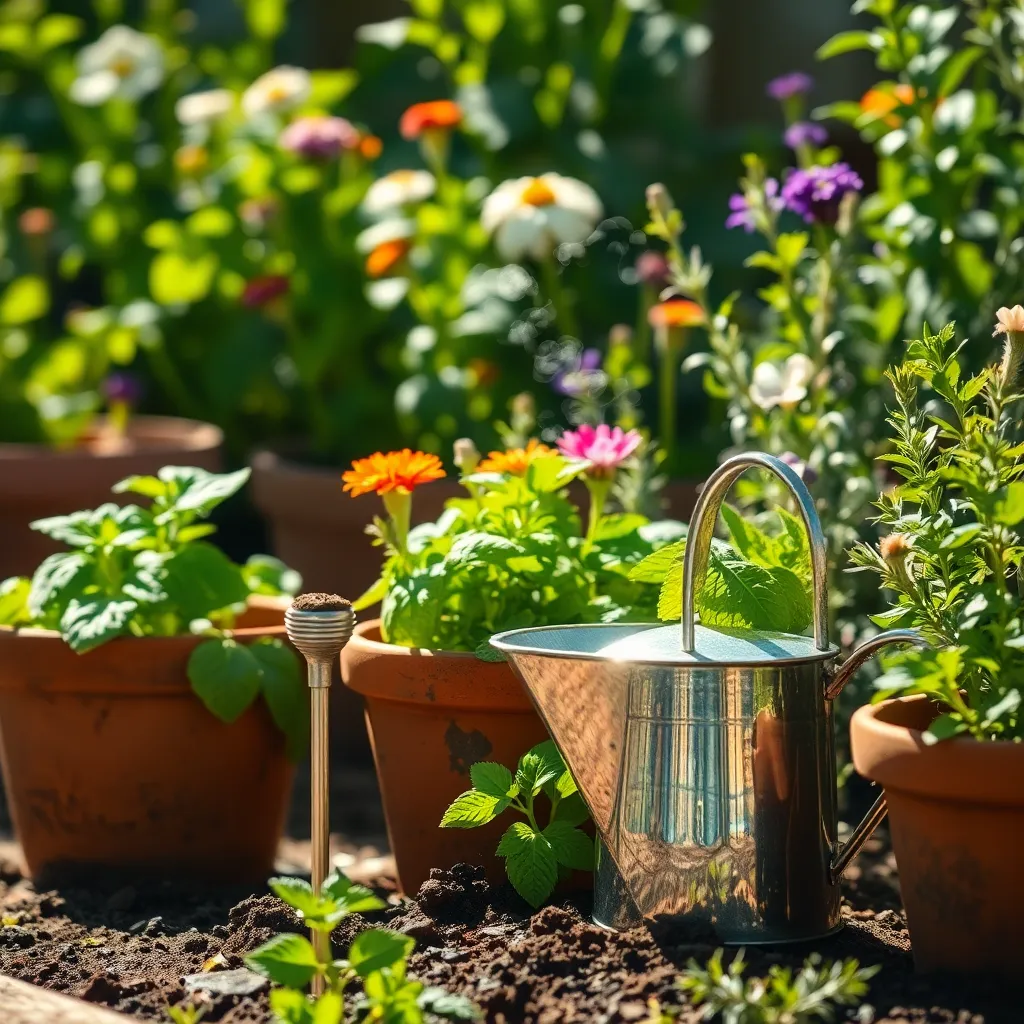
Measuring success in herb gardening often begins with understanding your soil composition. A soil tester is an invaluable tool that helps you determine the pH levels, moisture content, and nutrient availability in your garden, ensuring your herbs thrive.
For beginners, a simple soil pH tester can reveal whether your soil is too acidic or alkaline. Most herbs prefer a slightly acidic to neutral pH range of 6.0 to 7.0, and adjusting your soil accordingly can dramatically improve plant health.
Experienced gardeners might opt for a more comprehensive soil testing kit that also measures nitrogen, phosphorus, and potassium levels. These are the key nutrients that influence herb growth, and knowing their levels helps you tailor your fertilization strategy effectively.
To get the most accurate results, use your soil tester after a period of dry weather and test several areas of your garden. Regular testing every few months can help you monitor changes and make necessary adjustments, ensuring your herb garden remains productive.
The Role of Herb Garden Markers
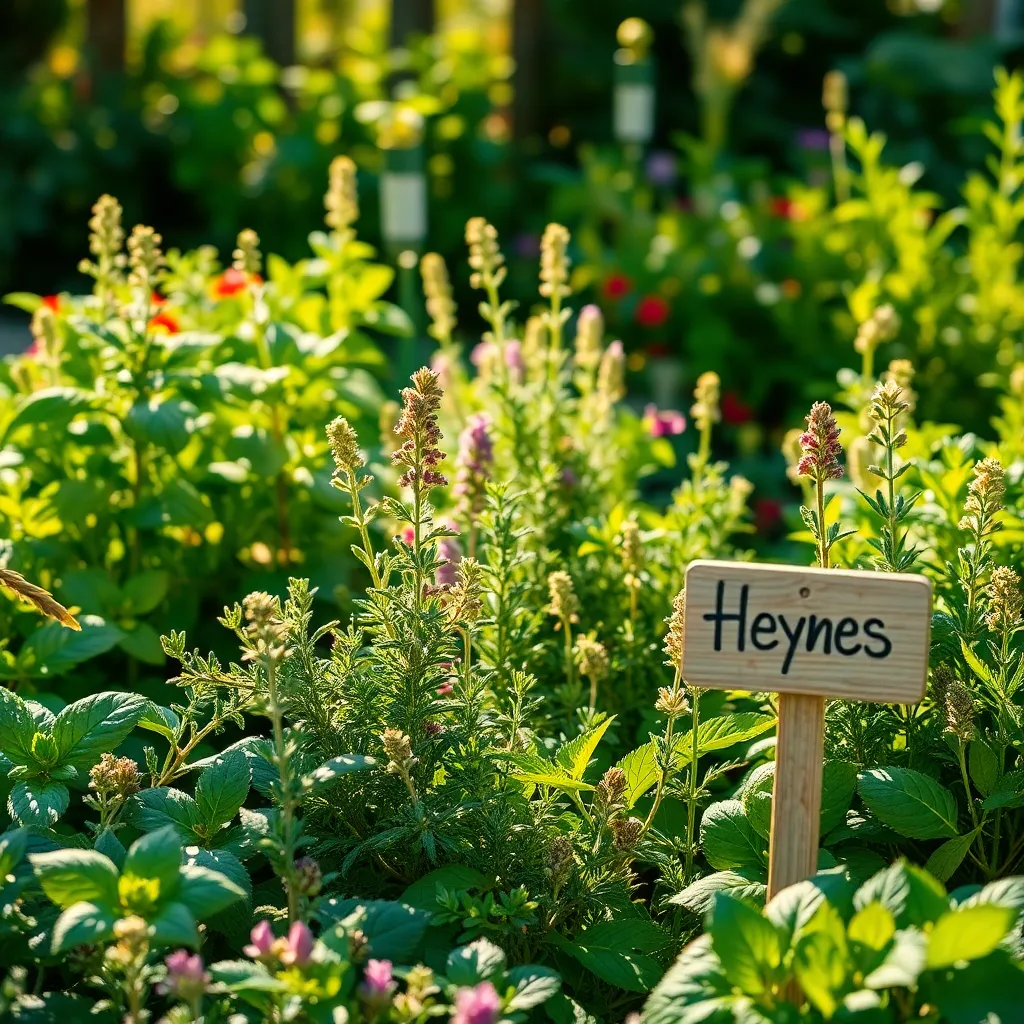
Identifying your herbs accurately is crucial for both beginner and experienced gardeners, which is where herb garden markers come into play. These markers help you keep track of each plant’s needs and ensure you provide the right care. They are particularly useful in large gardens or when growing herbs with similar appearance but different requirements.
Choose durable materials for your herb markers, such as metal or weather-resistant plastic, to withstand outdoor conditions. Ensure the text on the markers is clear and legible, using permanent ink or engraved labels to avoid fading. This ensures that information remains visible throughout the growing season, even after exposure to sunlight and rain.
For a beginner, using markers is a practical way to learn and remember plant specifics, such as sunlight preferences and watering needs. Consider including additional care instructions on the markers, like pruning tips or harvest times, to enhance their functionality. This can transform your markers into mini-guides right there in your garden, making them an invaluable resource at a glance.
Advanced gardeners can use markers to experiment with new varieties, documenting growth patterns and success rates right in the garden bed. Customizing markers with detailed notes about soil amendments or companion planting strategies can further enhance your gardening success. This level of detail helps track the effectiveness of different techniques, allowing for ongoing improvement and learning.
Keeping Herbs Healthy with a Sprayer
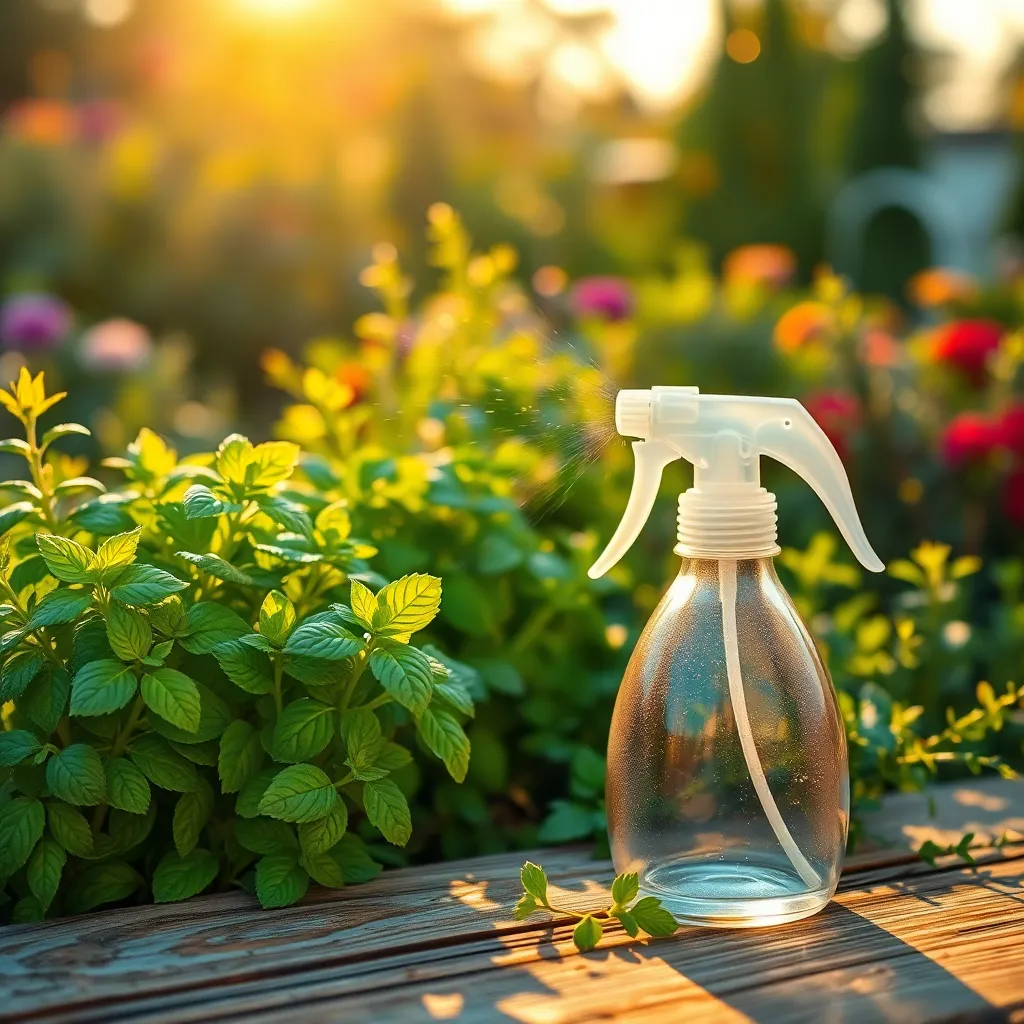
Using a sprayer is an excellent way to keep your herbs healthy and thriving. Herbs such as basil, mint, and thyme benefit from a consistent, fine mist of water, which a sprayer can provide, ensuring even coverage without waterlogging the soil.
For beginners, it’s essential to avoid overwatering, which is a common mistake. A sprayer allows you to control the amount of moisture your herbs receive, preventing root rot and promoting healthy growth.
Advanced gardeners can use a sprayer to apply foliar feeds, which are liquid fertilizers sprayed directly onto the leaves. This technique provides nutrients straight to the plant tissues, enhancing growth and boosting the plant’s resistance to pests.
Ensure your sprayer is clean and free from any chemical residues, especially if used for pesticides previously. Residues can harm delicate herb leaves, so thorough rinsing before use is crucial for maintaining plant health.
Maintaining Order with a Garden Rake
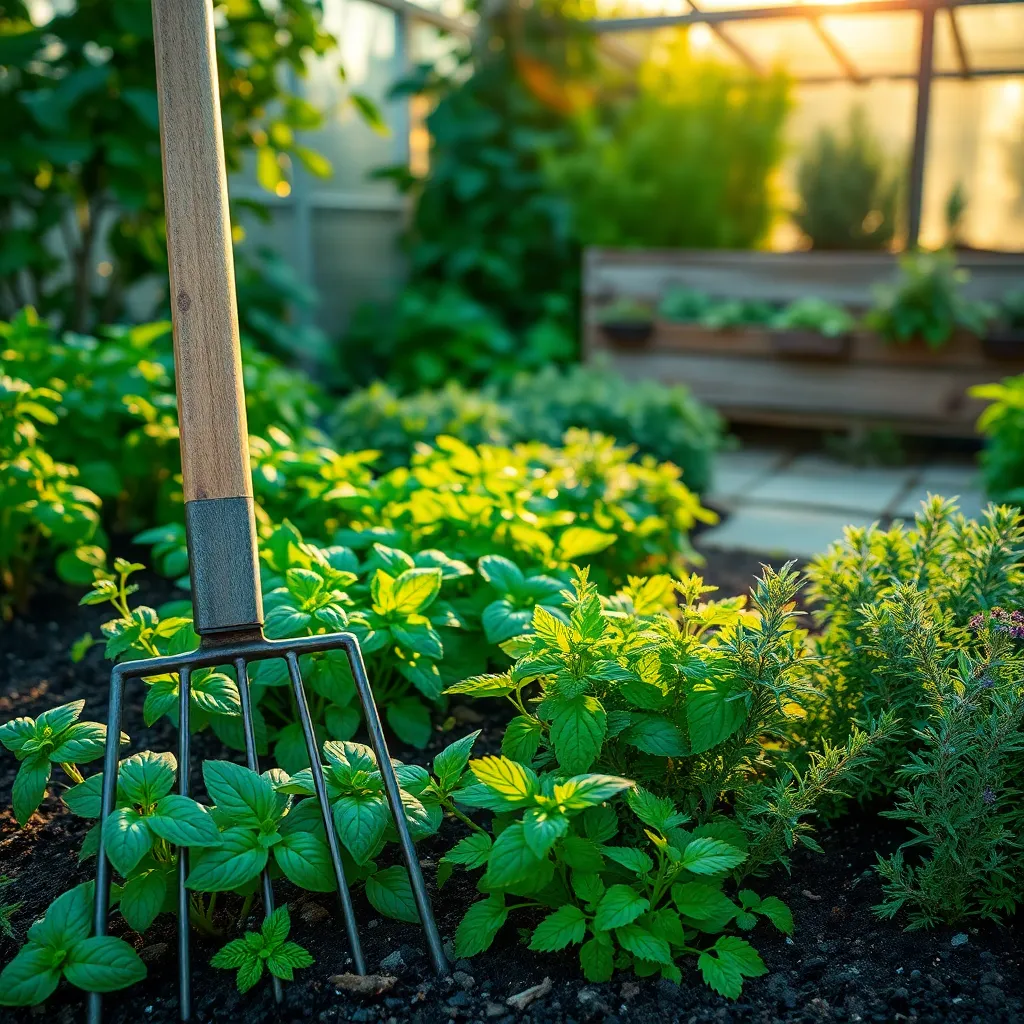
Maintaining order in your herb garden is essential, and a garden rake can be an invaluable tool in achieving this. A rake helps keep the soil loose and aerated, which is crucial for the healthy growth of herb roots.
Using a rake regularly can prevent soil compaction, especially in areas with heavy soil types like clay. Loosening the topsoil allows water and nutrients to penetrate more effectively, promoting robust plant health and vibrant growth.
For those with herb gardens that include a variety of plants, a rake can also help manage fallen leaves and debris. Clearing away organic matter that may harbor pests or diseases will keep your herbs healthier and reduce the likelihood of infestation.
Beginner gardeners can start by using a hand rake to gently mix in organic matter or compost. More experienced gardeners might utilize a larger rake to cover more ground efficiently, ensuring all areas of the garden are well-maintained.
Tool Care and Maintenance Tips
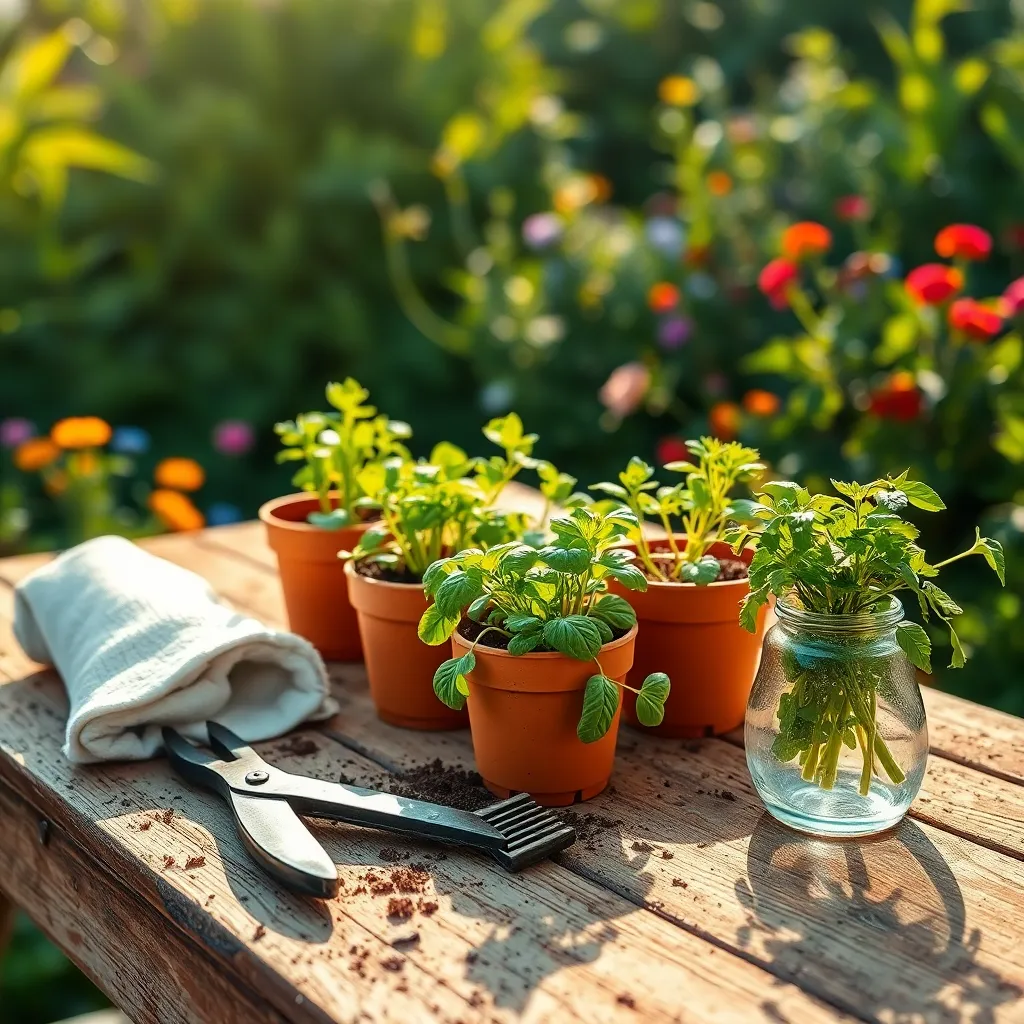
Proper care and maintenance of your herb gardening tools can significantly extend their lifespan and enhance their performance. Begin by cleaning tools after each use to remove dirt and plant residue, which can cause rust and dullness.
For optimal tool performance, sharpen blades regularly to ensure clean cuts that promote healthy plant growth. Use a sharpening stone or a file to maintain the sharpness of pruners, shears, and hoes.
Another key maintenance tip is to lubricate moving parts with light oil to prevent rust and ensure smooth operation. This practice is particularly important for tools with hinges or joints, such as secateurs and loppers.
Store your tools in a dry place to prevent moisture-related damage. Hanging them on a wall or placing them in a toolbox can also protect them from the elements and accidental damage.
Conclusion: Growing Success with These Plants
In the vibrant world of herb gardening, the tools you choose can make all the difference in nurturing a thriving relationship with your plants. We’ve delved into 15 essential tools that mirror the key elements of a successful relationship: communication (pruning shears), patience (watering cans), support (stakes), and adaptability (gloves), among others. Just as these tools help cultivate a flourishing garden, they also symbolize the nurturing needed to grow a loving, resilient relationship.
To put this wisdom into practice, why not start by assessing the “tools” you use in your personal connections? Whether it’s listening more actively or showing appreciation, pick one practice to enhance today.
As you embark on this journey to enrich your relationships, remember to save or bookmark this article as a handy guide for future reference. Like a well-tended garden, relationships thrive with continuous care and attention.
Looking ahead, envision the success that comes from mindful nurturing. By implementing these principles, you’re not only investing in your current relationships but also paving the way for future growth and happiness. Your relationship toolkit is now equipped; let’s start cultivating that garden of connection today!

